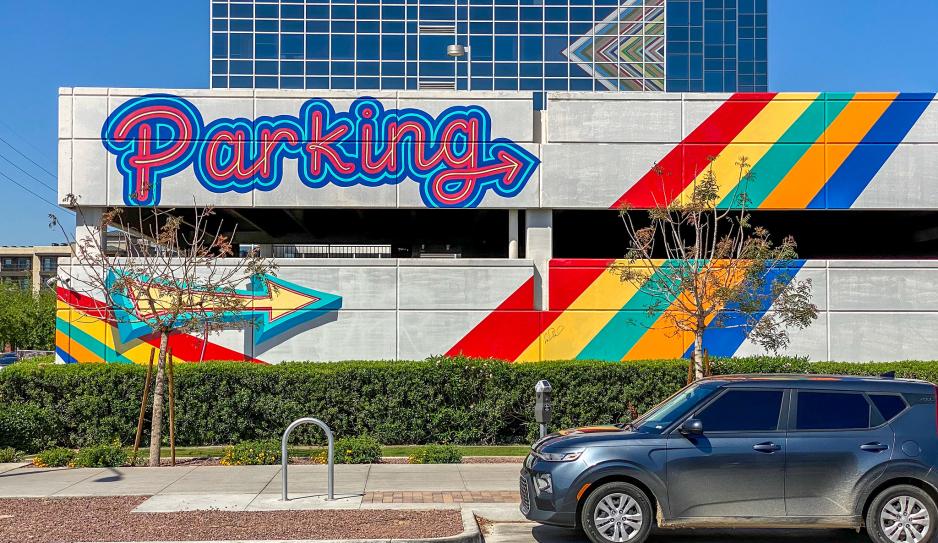The design of parking facilities plays a significant role in a transportation system as parking is always the very start and end of any passenger vehicle trip. Parking design and layout has a substantial impact on the orientation of buildings. Good parking design allows for increased interaction between land uses and streets, giving priority to pedestrians. In this way, successful parking design makes it easier for pedestrians to access their desired destinations with improved walkability. Parking design impacts the user’s experience of a destination, weighing factors such as parking availability, safety, and aesthetics.
Parking can be constructed in proximity to destinations without hindering public perception or disrupting the urban fabric. There are numerous elements that comprise well-designed off-street parking, including safety, pedestrian circulation, visual buffers and landscaping, energy efficiency, environmental quality, siting, and preferential spaces. Parking design also covers on-street parking and bicycle or micromobility device parking.
Safety and Pedestrian Circulation
Design parking to prioritize safety and pedestrian circulation by minimizing vehicle conflicts, providing adequate lighting, and adhering to ADA guidelines.
Visual Buffers and Landscaping
Design off-street parking to maximize visual buffers and landscaping where applicable.
Energy Efficiency and Environmental Quality
Promote energy efficiency and a high level of environmental quality at parking lots and structures.
Preferential Parking
Utilize preferential parking opportunities to maintain the best use of a parking facility.
On-Street Parking Design
Utilize on-street parking as a vital resource in expanding capacity of development and districts in high-demand.
Bicycle and Micromobility Device Parking Design
Provide well-placed bicycle and micromobility device parking to promote sustainable transportation modes.
Parking Structure Design
Implement high quality, well-designed parking structures to accommodate parking demand, maximize ground-level utilization, and support adjacent land uses.
Case Studies
- San José, CA, USA - Santana Row
- San José, CA, USA - 60 South Market Street
- Monrovia, CA, USA - Station Square Transit Village
